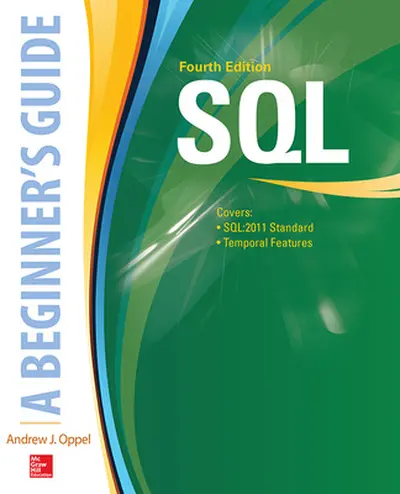My Account Details

ISBN10: 0071842594 | ISBN13: 9780071842594

Step 1 . Download Adobe Digital Editions to your PC or Mac desktop/laptop.
Step 2. Register and authorize your Adobe ID (optional). To access your eBook on multiple devices, first create an Adobe ID at account.adobe.com. Then, open Adobe Digital Editions, go to the Help menu, and select "Authorize Computer" to link your Adobe ID.
Step 3. Open Your eBook. Use Adobe Digital Editions to open the file. If the eBook doesn’t open, contact customer service for assistance.
Publisher's Note: Products purchased from Third Party sellers are not guaranteed by the publisher for quality, authenticity, or access to any online entitlements included with the product. Essential SQL Skills Made Easy Fully revised to cover the latest software versions, this easy-to-follow guide will get you started programming in SQL right away. Discover how to create database tables, access and modify data, work with triggers and transactions, build effective queries, and handle management and administrative functions. SQL: A Beginner's Guide, Fourth Edition offers clear instruction on each topic and is loaded with step-by-step examples. This practical book includes coverage of database security, SQL/XML, and new temporal data features. Designed for Easy Learning: • Key Skills & Concepts—Lists of specific skills covered in the chapter • Ask the Expert—Q&A sections filled with bonus information and helpful tips • Try This—Hands-on exercises that show how to apply your skills • Notes—Extra information related to the topic being covered • Tips—Helpful reminders or alternate ways of doing things • Cautions—Errors and pitfalls to avoid • Self-Tests—Chapter-ending quizzes to test your knowledge • Annotated Syntax—Example code with commentary that describes the programming techniques being illustrated
Chapter 1. Introduction to Relational Databases and SQL
Chapter 2. Working with the SQL Environment
Chapter 3. Creating and Altering Tables
Chapter 4. Enforcing Data Integrity
Chapter 5. Creating SQL Views
Chapter 6. Managing Database Security
Part II: Data Access and Modification
Chapter 7. Querying Data
Chapter 8. Modifying Data
Chapter 9. Using Predicates
Chapter 10. Working with Functions and Value Expressions
Chapter 11. Accessing Multiple Tables
Chapter 12. Using Subqueries to Access and Modify Data
Chapter 13. Working with Temporal Data
Part III: Creating SQL Invoked Routings
Chapter 14. Creating SQL Invoked Routines
Chapter 15. Creating SQL Triggers
Chapter 16. Using SQL Servers
Chapter 17. Managing SQL Transactions
Chapter 18. Accessing SQL Data from Your Host Program
Chapter 19. Working with XML Data
Part IV: Appendices
Appendix A. Answers to Self Tests
Appendix B. Keywords
Need support? We're here to help - Get real-world support and resources every step of the way.